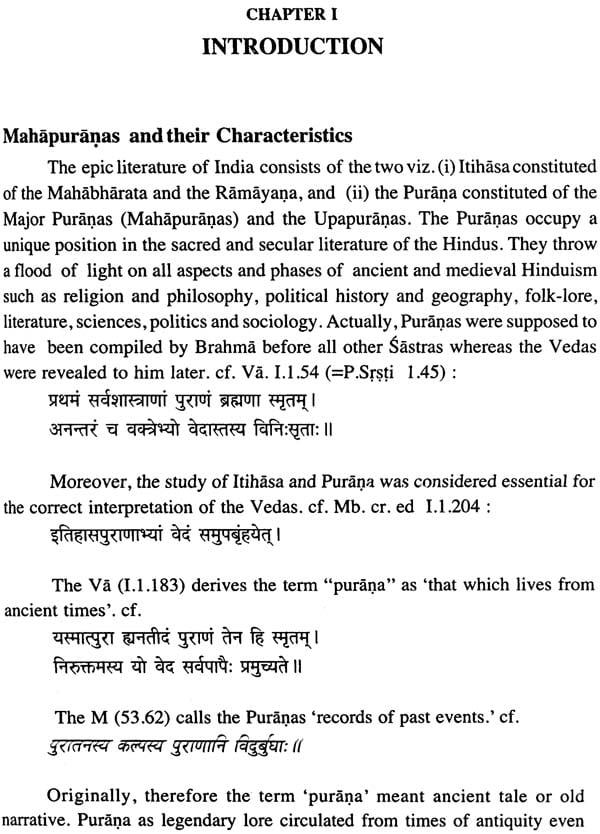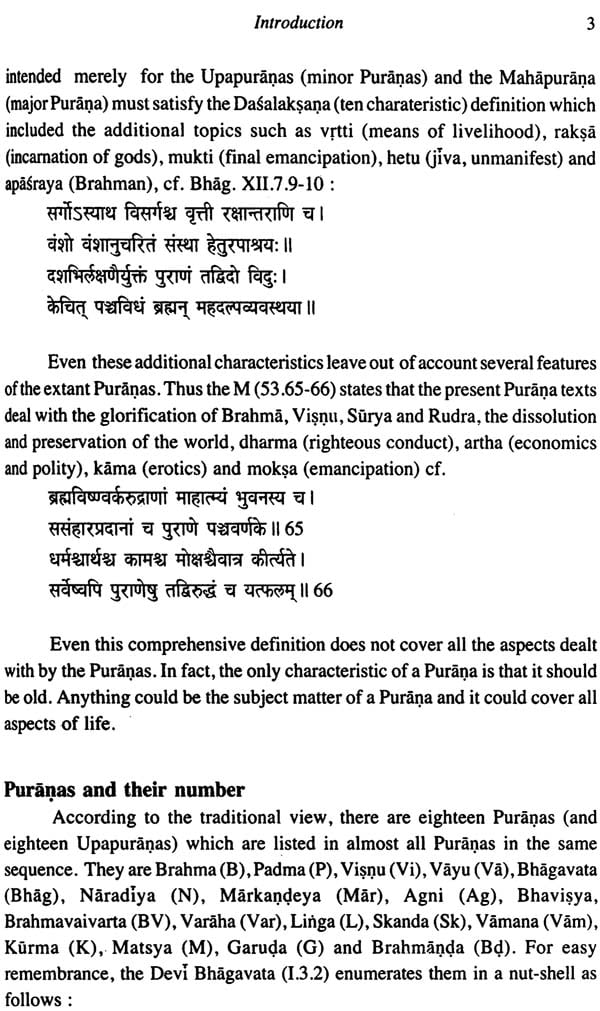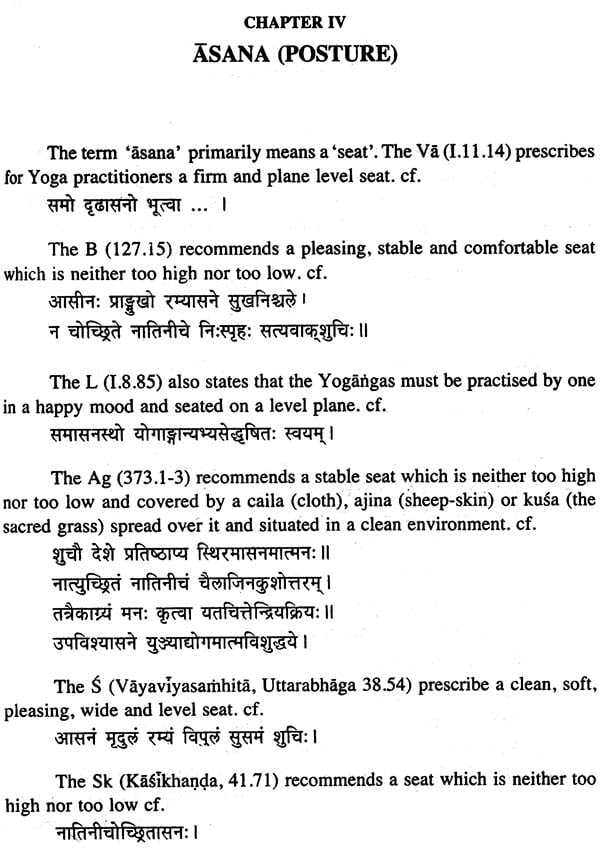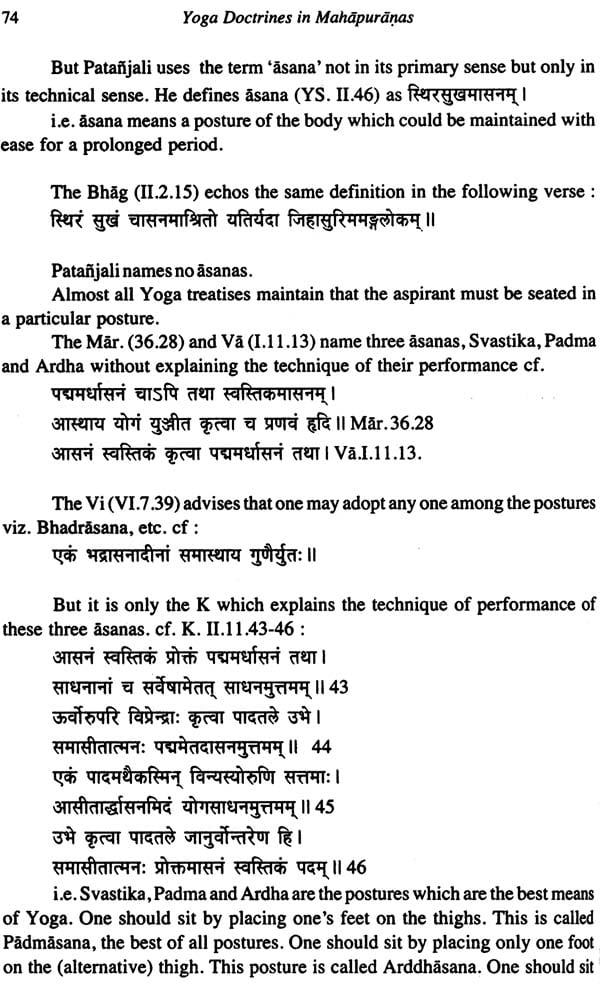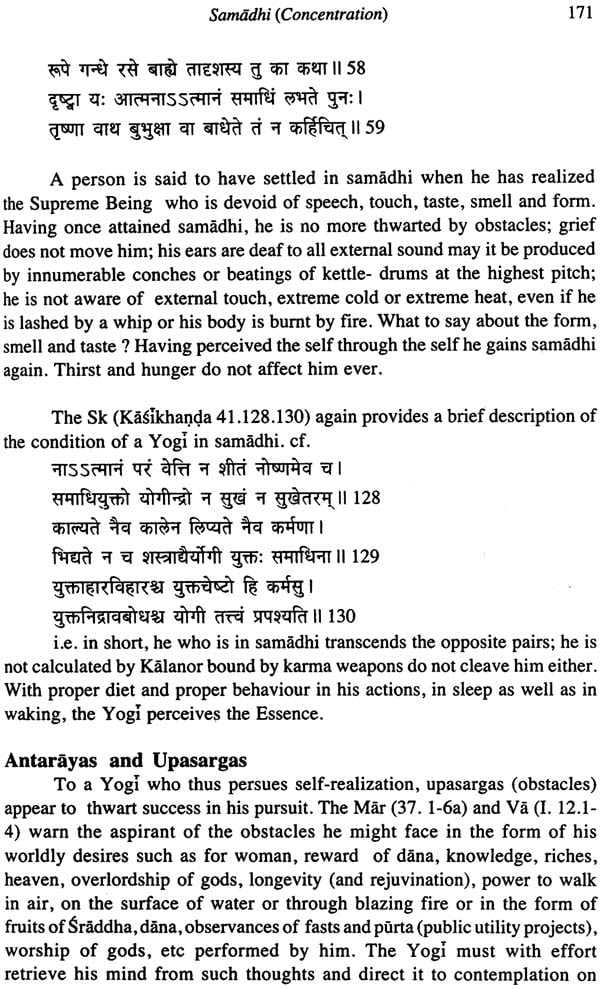
Yoga Doctrines in Mahapurana-s
Book Specification
| Item Code: | NAL648 |
| Author: | G. K. Pai |
| Publisher: | Bhandarkar Oriental Research Institute, Pune |
| Language: | Sanskrit Text With English Translations |
| Edition: | 2007 |
| Pages: | 252 |
| Cover: | Paperback |
| Other Details | 9.5 inch X 6.5 inch |
| Weight | 350 gm |
Book Description
Rapidly following the new edition of the Patanjala Yogasutrani prepared by Prof. K. S. Arjunwadkar we are herewith placing in the hands of scholars of the Yoga-system - the book Yoga Doctrines in Mahapurana-s authored by our scholar Dr. G. K. Pai. It contains a discussion on all the eight limbs (astanga) of the classical Yoga-doctrine with a separate chapter giving the conclusion.
As is stated by the erudite author in the Introductory chapter Itihasa (comprising the two national epics) and Purana-s (the main eighteen puranas alongwith many a minor one) are the two main encyclopaedic collections of encient Indian thought. Yoga is the basic grammar of all the orthodox systems of Indian Philosophy.
To scan the Purana-s with a view to culling together their Yogic thought, arranging the same methodically and discussing its contribution is a task ably carried out by Dr. G. K. Pai, a worthy student of the late eminent orientalist Dr. A. D. Pusalker.
I am sure the readers will find the contents of the book quite useful in understanding the Puranic contribution to the Yoga System. I congratulate the author for the successful completion of his plan and Shri. Nandkishor Khurjekar, for his meticulous composing and printing.
It was in the seventies, while I was working as the Director of Sukrtindra Oriented Research Institute of Cochin, that I was invited to participate in and present a research paper on the topic of Yoga in Puranas at an International Seminar on Yoga in Delhi. That brief paper prepared at that time would not have developed into this present monograph but for my chance meeting, in the B.O.R.I. premises in the year 2002, with Dr. M. L. Gharote, who was my senior colleague at the Kaivalyadhama, Lonavla, way back in late sixties. It was mainly due to his inspiration that I resumed study of this topic after we had jointly completed the study of Siddha-Siddhanta-paddhati of Sri Goraksanatha which was later published by the Lonavla Yoga Institute, Lonavla in 2005. His sad demise robbed me of not only a dear friend but also of an expert on Yoga who could have provided me proper guidance on many an occasion during the preparation of this work.
The present work is divided into ten chapters. In the first chapter i.e. Introduction besides defining 'Purana' and discussing its characteristics an attempt has been made to trace the philosophical background of the Puranas followed by the role of Yoga in Puranas and the aspects of Yoga.
The next eight chapters are assigned for discussion on the eight angas (aspects) of Yoga respectively. The Yoga material drawn from the Purana texts is compared, wherever possible to the Yoga concepts available in the Mahabharata, Sutras and Smrtis, Patanjala Yoga Sutra, Yogopanisads and Hathyoga texts.
The conclusions arrived at make the final chapter of the work.
The work is dedicated with reverence to my teacher Dr. Ram Gopal to whom I am indebted for the valuable guidance he provided me during the period of my study for M.A: (Sanskrit) degree examination of the Delhi University as a student of the Hans Raj College, Delhi from 1957 to 1959. I am thankful to all the scholars whose works I have made use of. I am grateful to the authorities of the Bhandarkar Oriental research Institute, Pune especially to Dr. MG. Dhadphale, the Hon. Secretory, for having accepted this work for publication.
I am also thankful to Shri Sateesh Sangle and other members of the staff of the R.N. Dandekar Library (BORI) for their unstinted co-operation extended to me during the production of this work.
| Abbreviations | ||
| Chapter I | Introduction | 1 |
| Chapter II | Yamas (Restraints) | 41 |
| Chapter III | Niyamas (Observances) | 54 |
| Chapter IV | Asana (Posture) | 73 |
| Chapter V | PraQayama(Control of Vital Airs) | 86 |
| Chapter VI | Pratyahara (Withdrawal) | 109 |
| Chapter VII | Dharana (Fixation) | 118 |
| Chapter VIII | Dhyana (Contemplation) | 143 |
| Chapter IX | Samadhi (Concentration) | 161 |
| Chapter X | Conclusion | 203 |
| Appendix | 211 | |
| Index of Technical Terms(i) | 215 | |
| Index of Technical Terms(ii) | 225 | |
| Bibliography | 235 |
